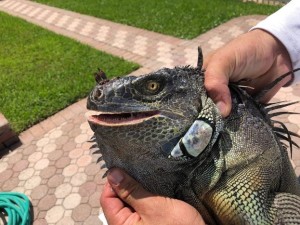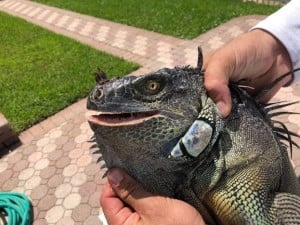The Washington Post recently released an article regarding the consequences of the increasing green iguana population in South Florida.
 The green iguana is native to large parts of Central America, eastern Caribbean islands, and parts of South America. This invasive species was first reported to be inhabiting South Florida in the 1960’s.
The green iguana is native to large parts of Central America, eastern Caribbean islands, and parts of South America. This invasive species was first reported to be inhabiting South Florida in the 1960’s.
An invasive species is one that is not native to a certain location and typically spreads diseases and damages the environment.
As many South Florida residents know, the green iguanas tend to destroy landscaping, gardens, damage infrastructure, leave their droppings all over, and even carry harmful diseases such as salmonella. The population of these invasive species, which can grow up to 5 feet long and weigh close to 20 pounds, has been increasing uncontrollably for several years.
Green iguanas can live up to 10 years and may lay six dozen eggs at a time. Since they have no natural predators in Florida, the only population controls they face are cold temperatures and our pest control methods. However, after record heat levels this summer, the latter is the only viable option to control the green iguana population.
The population issue has grown so out of control, that the Florida Fish and Wildlife Conservation Commission (FWC) has announced an open season on the green iguanas. The FWC states that homeowners may kill iguanas on their own properties without a permit, as well as on 22 public lands in South Florida.
Precaution should always be taken whether you elect to remove green iguanas from your property yourself, by hiring a professional, or not at all. To read more on the Washington Post article, click here. Or to visit the FWC statement on green iguanas, click here.

